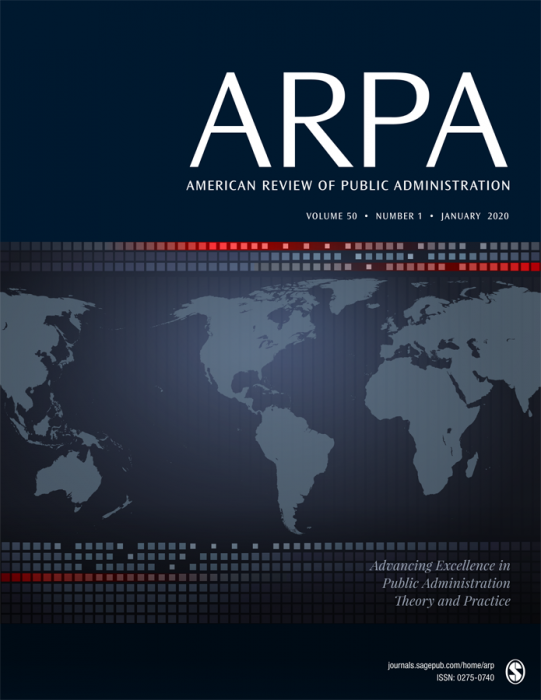Interactive Governance Between and Within Governmental Levels and Functions: A Social Network Analysis of China's Case Against COVID-19
IF 2.5
2区 管理学
Q2 PUBLIC ADMINISTRATION
引用次数: 8
Abstract
COVID-19 has created long-lasting yet unprecedented challenges worldwide. In addition to scientific efforts, political efforts and public administration are also crucial to contain the disease. Therefore, understanding how multi-level governance systems respond to this public health crisis is vital to combat COVID-19. This study focuses on China and applies social network analysis to illustrate interactive governance between and within levels and functions of government, confirming and extending the existing Type I and Type II definition of multi-level governance theory. We characterize four interaction patterns—vertical, inter-functional, intra-functional, and hybrid—with the dominant pattern differing across governmental functions and evolving as the pandemic progressed. Empirical results reveal that financial departments of different levels of government interact through the vertical pattern. At the same time, intra-functional interaction also exists in provincial financial departments. The supervision departments typically adopt the inter-functional pattern at all levels. At the cross-level and cross-function aspects, the hybrid interaction pattern prevails in the medical function and plays a fair part in the security, welfare, and economic function. This study is one of the first to summarize the interaction patterns in a multi-level setting, providing practical implications for which pattern should be applied to which governmental levels/functions under what pandemic condition.政府层级和职能之间和内部的互动治理:中国抗疫案例的社会网络分析
新冠肺炎在全球范围内造成了长期而前所未有的挑战。除了科学努力外,政治努力和公共管理对遏制这种疾病也至关重要。因此,了解多层次治理系统如何应对这场公共卫生危机对于抗击新冠肺炎至关重要。本研究以中国为研究对象,运用社会网络分析来阐释政府层级之间、层级内部和职能之间的互动治理,对现有的多层次治理理论的第一类和第二类定义进行了确认和扩展。我们描述了四种互动模式——垂直、职能间、职能内和混合——主导模式因政府职能而异,并随着疫情的发展而演变。实证结果表明,各级政府财政部门之间存在纵向互动关系。与此同时,省级财政部门也存在职能内部的互动。监管部门通常在各级采取跨职能模式。在跨层次、跨职能方面,混合互动模式在医疗职能中占主导地位,在安全、福利和经济职能中发挥着公平作用。这项研究是第一次在多层次环境中总结互动模式的研究之一,为在什么样的疫情条件下,哪种模式应该应用于哪些政府级别/职能提供了实际启示。
本文章由计算机程序翻译,如有差异,请以英文原文为准。
求助全文
约1分钟内获得全文
求助全文
来源期刊

American Review of Public Administration
PUBLIC ADMINISTRATION-
CiteScore
12.10
自引率
2.00%
发文量
24
期刊介绍:
The American Review of Public Adminstration (ARPA) aspires to be the premier academic journal in the field of public affairs and public administration. As a peer-reviewed journal with the combined goals of advancing the knowledge of public administration and improving its practice, ARPA features articles that address rapidly emerging issues in public administration and public affairs and is open to both traditional and nontraditional apporaches. ARPA has no methodological bias other than a preference for an analytical approach to the issue(s) being addressed. Of particular interest are theory-based empirical research, commentaries on pressing issues, reviews or syntheses of research, and conceptual/theoretical discussions on or over the boundaries of traditional public administration.
 求助内容:
求助内容: 应助结果提醒方式:
应助结果提醒方式:


